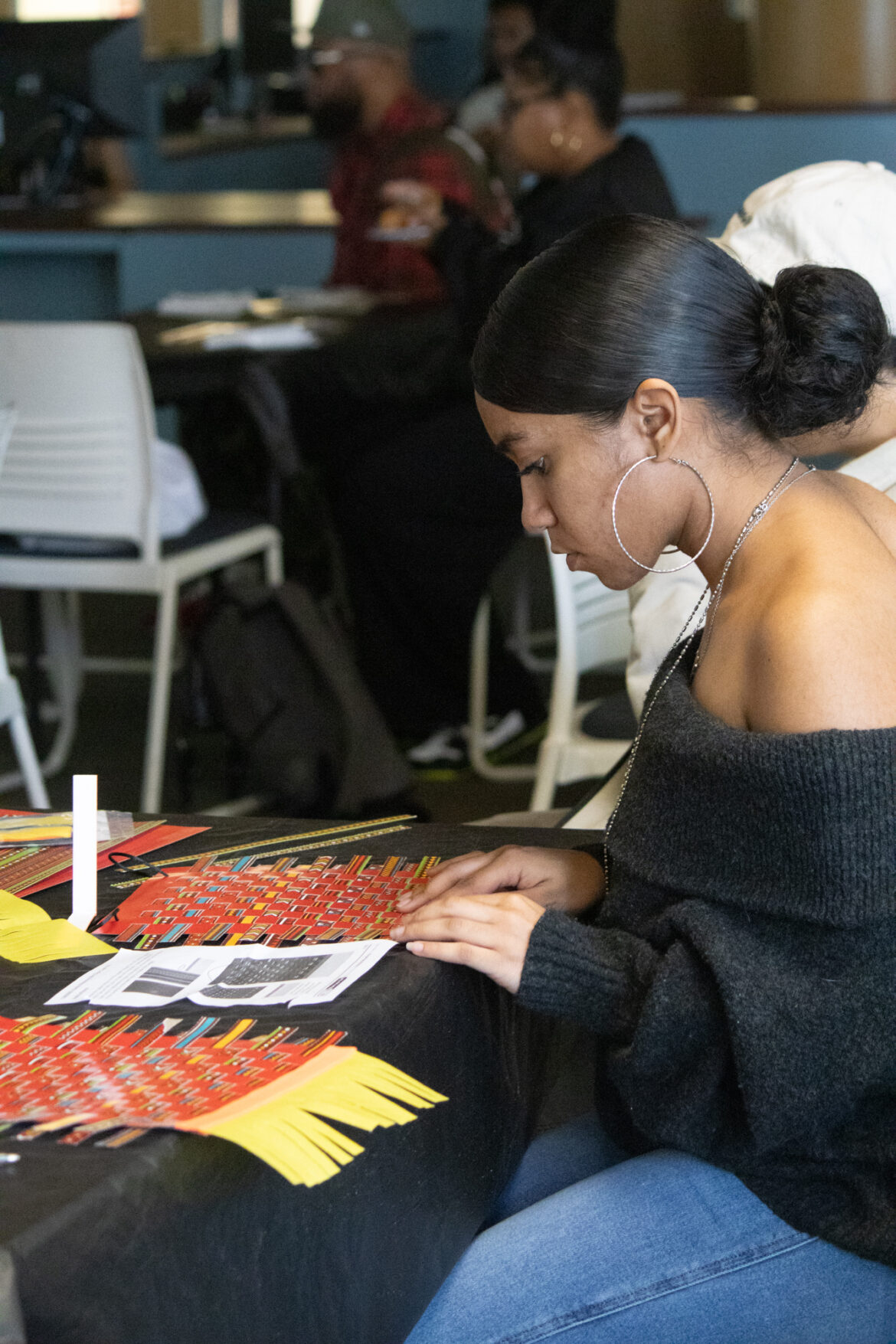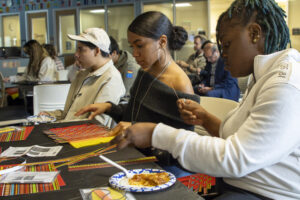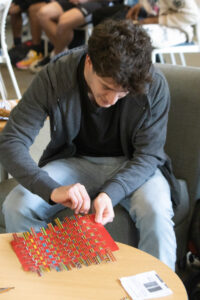
With a webinar joined by all nine LACCD campuses, Pierce College students and faculty may have literally been able to weave connections between Black history and modern culture at the Kente Weaving event in the Multicultural Center.
Umoja provided supplies so attendees could participate in kente weaving while they watched The Black History Month Master Class webinar presented by Chike Akua, which was organized by LACCD in partnership with African American Male Education Network and Development (A2MEND) and screened on Feb. 27, with an aim to teach more about African culture.
“It was important to enlighten everybody, not just our Black students on campus, but our other population of students about what’s happening and what has happened,” Umoja Club President Xannia Simpson said. “I think it was a really amazing time to educate everybody about how important Black history is, not just to Black people, but to the world in general.”
The event aimed to teach topics that are not usually covered in schools with a focus on the influence African cultures had in modern society, specifically in East Africa with the Kingdoms of Egypt and Kush.
According to Akua, Black people led the world scientifically and that is not typically heard about.
“I learned quite a bit about the link between Ancient Egyptian history and African history, and how that links to African American history and Black culture as well,” Automotive Service Technology Professor Michael Van Dyke said. “I brought my daughter as well. She’s 12 years old and so I just brought her to introduce her to different cultural aspects.”
Akua explained instances of hellenization of African cultures, such as the original name of Ancient Egypt being Kemet and the original name of the Sphinx being Heremakhet, as well as provided an interpretation for the message the builders of the monument had.
According to Akua, African cultures had an influence in the Americas before the arrival of Europeans, highlighting the visual similarities between Mesoamerican statues of groups like the Olmecs, with African ones.
The kente weaving was chosen as a way to incorporate what was being taught with an activity, according to Simpson.
The weaving activity involved two pages. One page had perforations and kente patterns, and another had slits. The page with the kente pattern was torn strip by strip and then each strip inserted into the slits with an over and under technique, similar to macrame, until the whole page was finished.
The origins of kente cloth are largely attributed to the Ashanti people from modern-day Ghana. The practice may have started around 400 years ago or even as early as 1000 BCE with the Akan people of the Ivory Coast and Ewe people of southeastern Ghana, according to the Timothy S. Y. Lam Museum of Anthropology.
Simpson felt that the webinar was a great way to connect all campuses in the district without physically being together. Simpson described what she believed the message of the webinar to be.
“There is power in being Black, and we need to understand where we come from and understand our history more in order to empower our people,” Simpson said.






